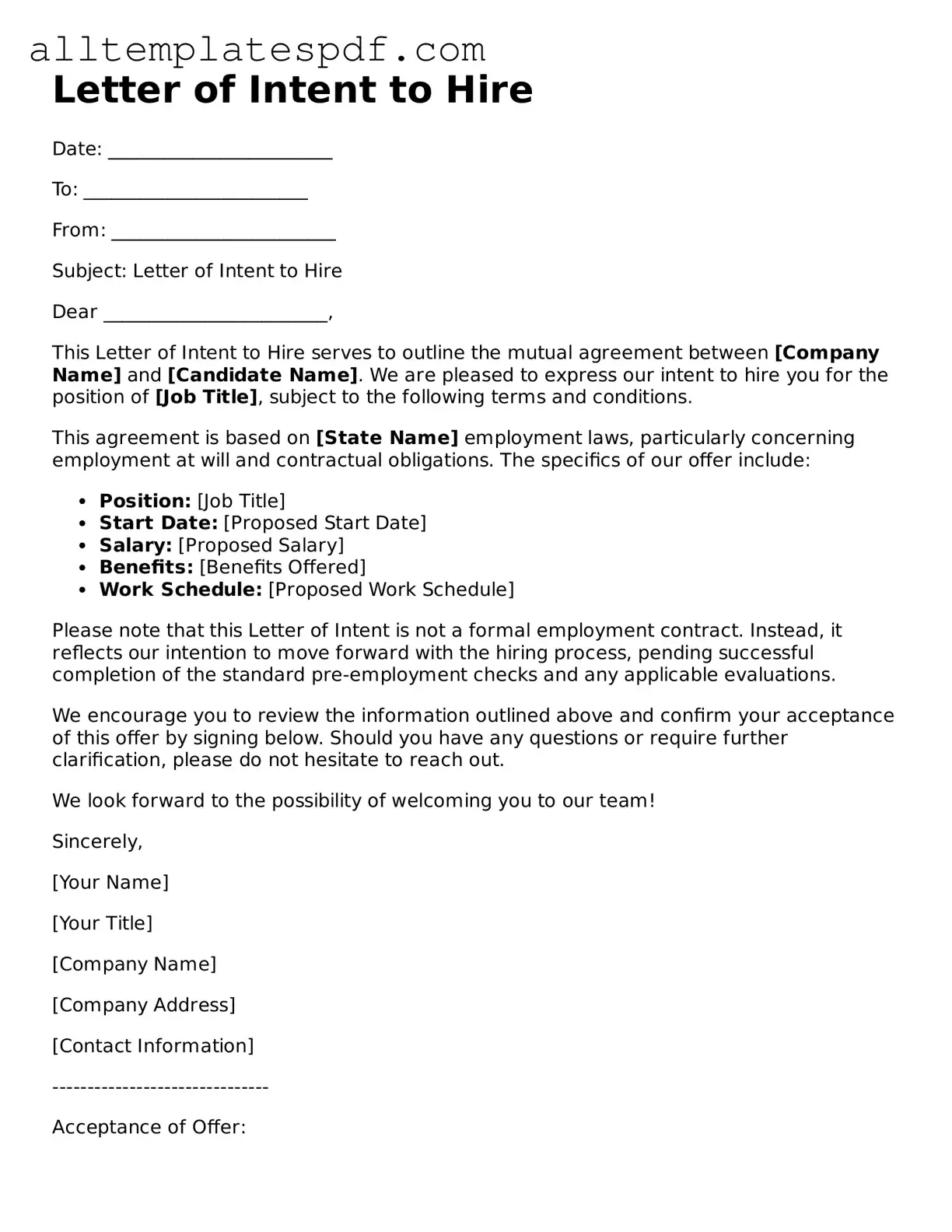Filling out the Letter of Intent to Hire form can seem straightforward, but many individuals make common mistakes that can lead to delays or complications. One frequent error is failing to include all required information. Each section of the form must be completed accurately. Omitting even a single detail can result in the form being rejected.
Another mistake is providing inaccurate information. Double-checking names, addresses, and dates is crucial. Errors in these areas can create confusion and may affect the hiring process. It's essential to ensure that all details are correct before submission.
Some people neglect to sign the form. A signature is often required to validate the document. Without it, the form may be considered incomplete. Remember to sign and date the form where indicated.
Using unclear or ambiguous language can also lead to misunderstandings. It's important to be direct and concise. Avoid jargon or overly complicated phrases that could confuse the reader.
In addition, failing to follow the specific instructions provided with the form is a common pitfall. Each organization may have unique requirements. Always read the instructions carefully to ensure compliance.
Many individuals also forget to keep a copy of the completed form for their records. Having a copy can be helpful for future reference or in case any issues arise after submission. Always make sure to retain a copy for your files.
Another mistake is submitting the form without checking for typos or grammatical errors. Such mistakes can make a negative impression. Taking the time to proofread can enhance the professionalism of the document.
Some applicants rush through the process, which can lead to careless mistakes. Taking a moment to review the form can save time in the long run. Slow down and ensure everything is filled out correctly.
Additionally, people sometimes fail to provide the necessary supporting documents. If the instructions require additional paperwork, make sure to include it. Incomplete submissions can lead to delays in the hiring process.
Finally, not following up after submission can be a missed opportunity. It’s wise to confirm that the form was received and inquire about the next steps. This shows initiative and can help keep the hiring process moving smoothly.
